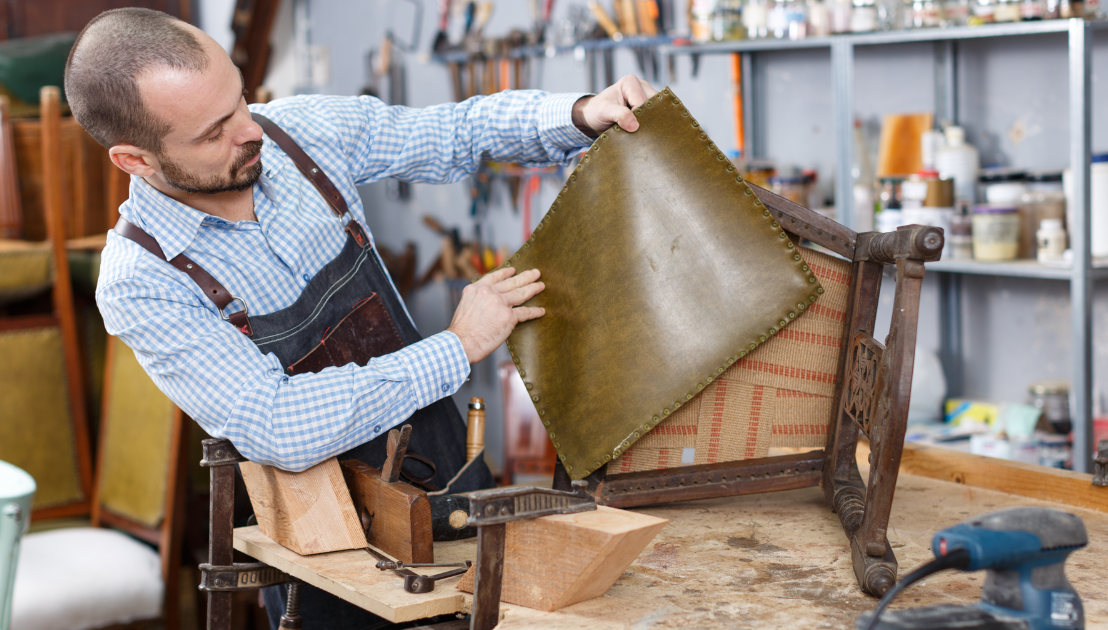Antique furniture possesses a timeless allure, often carrying stories of bygone eras and craftsmanship that withstands the test of time. Restoring old furniture not only breathes new life into these pieces but also allows you to infuse your space with character and history. Embracing do-it-yourself (DIY) techniques for antique restoration can be a rewarding endeavor, transforming worn-out furniture into cherished heirlooms. Let’s delve into some DIY methods and tips for reviving old furniture and preserving its charm.
Assessment and Preparation
Before starting any restoration project, carefully assess the condition of the piece. Note any damages, scratches, missing parts, or layers of old paint or varnish that need attention. Clean the furniture thoroughly, removing dust, grime, and residues that might hinder the restoration process.
Repairing Structural Integrity
Address any structural issues first. Glue loose joints, reinforce weakened legs, or replace missing parts like knobs or handles. This step ensures the furniture is sturdy and functional before moving on to aesthetic restoration.
Stripping and Refinishing
If the furniture has layers of old paint or varnish, stripping is often necessary. Use paint strippers or sandpaper to remove old finishes, revealing the natural wood underneath. Be patient and work carefully, ensuring even removal without damaging the wood.
Staining and Finishing
After stripping, consider staining the wood to enhance its natural beauty. Choose a stain that complements the wood’s grain and color. Apply the stain evenly, allowing it to penetrate the wood for the desired richness. Finish with a protective coat of varnish or wax to seal the wood and add a glossy or matte finish, depending on your preference.
Preserving Original Details
Respect and preserve any original details that contribute to the piece’s authenticity. Retain intricate carvings, unique hardware, or decorative elements that showcase the furniture’s history and craftsmanship. These details add character and value to the restored piece.
Refurbishing Upholstery
For furniture with fabric components, consider reupholstering or repairing the fabric. Replace worn-out upholstery with fabrics that complement the era and style of the piece. Alternatively, clean existing upholstery thoroughly or add slipcovers for a fresh look.
Hardware and Finishing Touches
Upgrade or clean hardware such as knobs, handles, or hinges. Polishing or replacing these elements can significantly elevate the appearance of the restored furniture. Pay attention to small details as they contribute to the overall aesthetic.
Patience and Attention to Detail
Restoring antique furniture is a labor of love that requires patience and attention to detail. Take your time with each step, allowing adequate drying and curing time between processes. Rushing through restoration can compromise the quality of the final result.
Protecting and Maintaining
Once the restoration is complete, implement measures to protect and maintain the furniture. Use coasters, table pads, or felt protectors to prevent scratches and heat damage. Regularly clean and condition the wood to preserve its luster and longevity.
DIY antique furniture restoration is a fulfilling journey that not only revitalizes old pieces but also honors craftsmanship from eras past. By following careful assessment, repair, refinishing, and attention to detail, you can breathe new life into worn-out furniture, transforming them into cherished pieces that add character and charm to your home. Embrace the art of restoration, and let the beauty of restored antiques enrich your living spaces for years to come.
